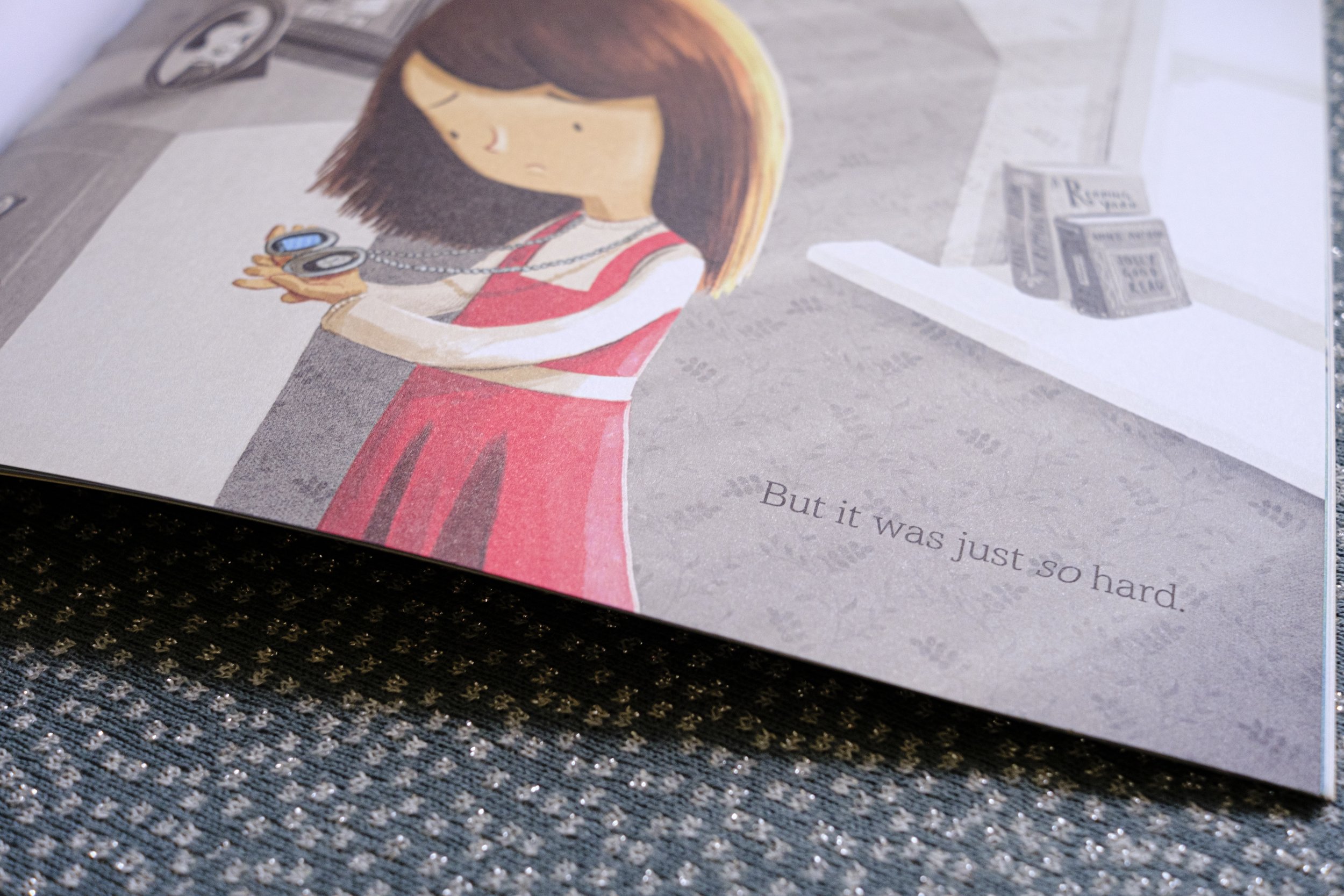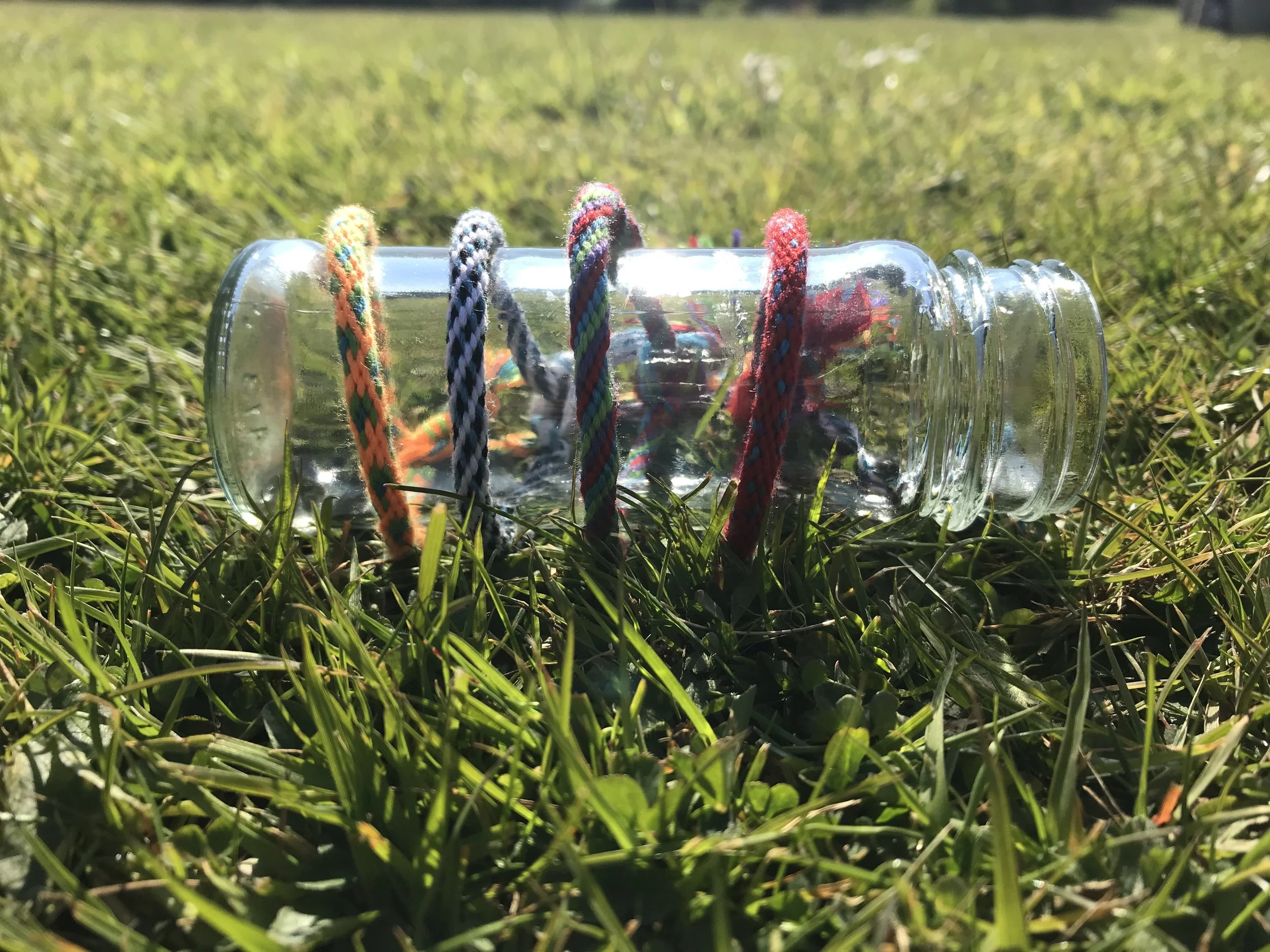
The Sea saw by tom percival
Look together at the front page and ask the children what they think this story may be about. Read the blurb on the back cover and ask how the children think the sea can help Sofia when she loses her beloved bear at the beach.
Read the book together taking time to note how the sea tries to help return to the bear to Sofia. Some children may also identify others who help including sea creatures and Sofia’s dad.
Key Questions to ask after reading the book:
Why is the bear so special to Sofia? Bereaved children will likely say that Sofia’s mum has died and the bear is so special because it belonged to her. It is irreplaceable because of her emotional attachment to it.
Do you have something that belonged to your special person which is now special to you? Where do you keep it? How do you feel about it?
Who do you know who helps and looks out for you like the sea does for the bear and Sofia in this book?

Activity: Friendship Bracelet making
Each child will need eight c. 100cm lengths of thread (embroidery silks are best, but wool also works) and either some tape or a friendship bracelet making kit easily available from craft shops. You could also make your own version of Neds Weaving Wheel for this activity. There are helpful videos online especially tutorials created by children for children on how to use the wheel.
Think about 8 people who care about and help you. They are your support network and this activity is about creating something to remind us that we have special people in our lives who care for us like the sea in Sofia’s story.
Select a length of coloured thread for each of your eight people and tie them together in a knot at one end.
Tape the knot to a table if not using the wheel. If using the wheel, follow the instructions on the kit or online to start creating your bracelet.
If not using the wheel, start to twist or plait the threads together to a make a patterned bracelet.
The brilliant resource book Muddles, Puddles and Sunshine by Diana Crossley includes this activity on page 21: Who is there for me? Crossley rightly says, “It is ok to miss the person who has died but other people care about you too.” The friendship bracelet is a good reminder of who is there for us kept around our wrist.
Ending the session:
Share the friendship bracelets with each other and perhaps ask each child to choose one coloured thread to explain who that person is and what they do to care for them. If school policy doesn’t allow the wearing of friendship bracelets at school, suggest the children put it on a favourite bear at home.
Remind the children that even through sometimes a trusted adult may appear too busy to talk to them, it’s important to keep trying. Perhaps discuss when it’s a good time in a day’s routine to connect with an adult you want to talk to and how they might do this. A great idea for a talking tool is to create a small bag or box containing three small stones, a smooth one, a rough one and one that’s special/a bit different and interesting. These can be used by the child to explain to an adult what has gone smoothly for them, perhaps during a day, what has felt a bit rough and what has felt special or interesting. There’s no solutions to be made by the adult, just hold space for the child to talk allowing them to process their feelings and thoughts. Remember that every emotion is ok and a very normal part of grief. Always finish with the ‘special’ stone to hold the last space for kindness and love.
